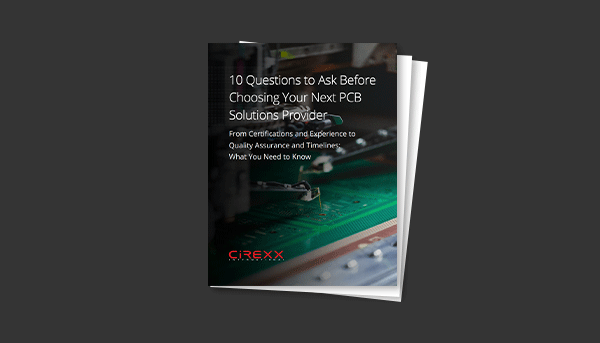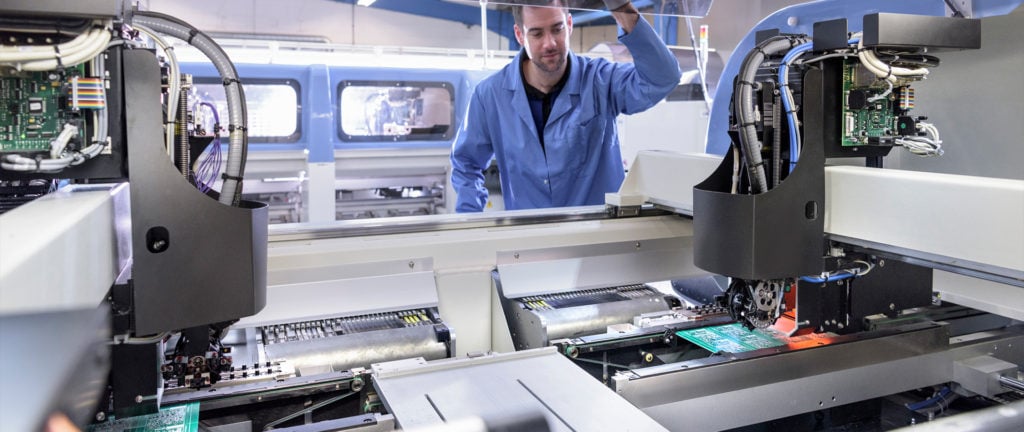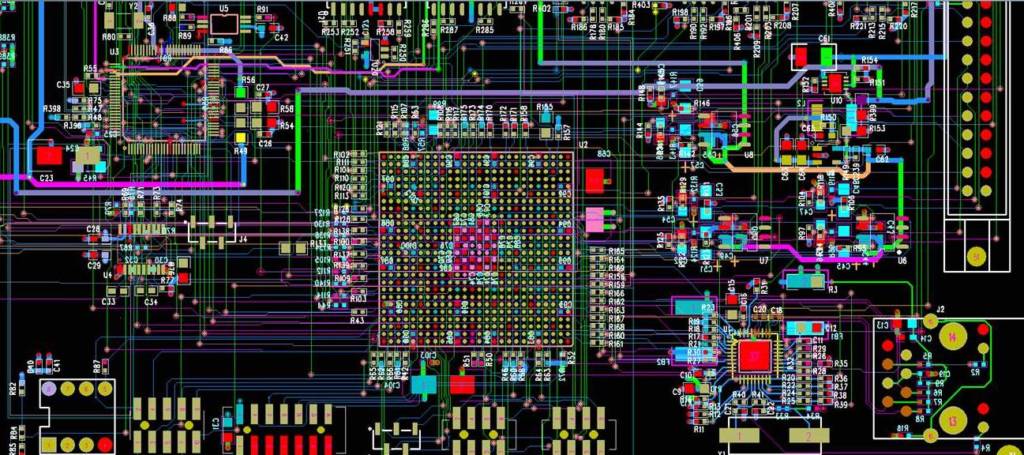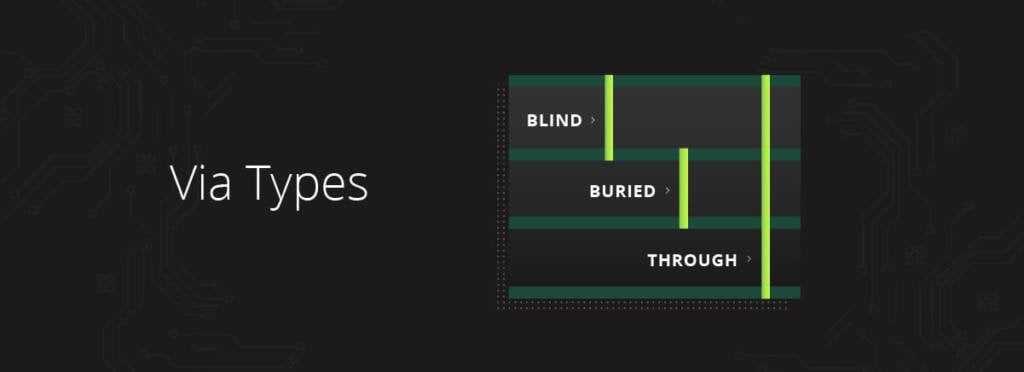RF PCB Materials & Stackup
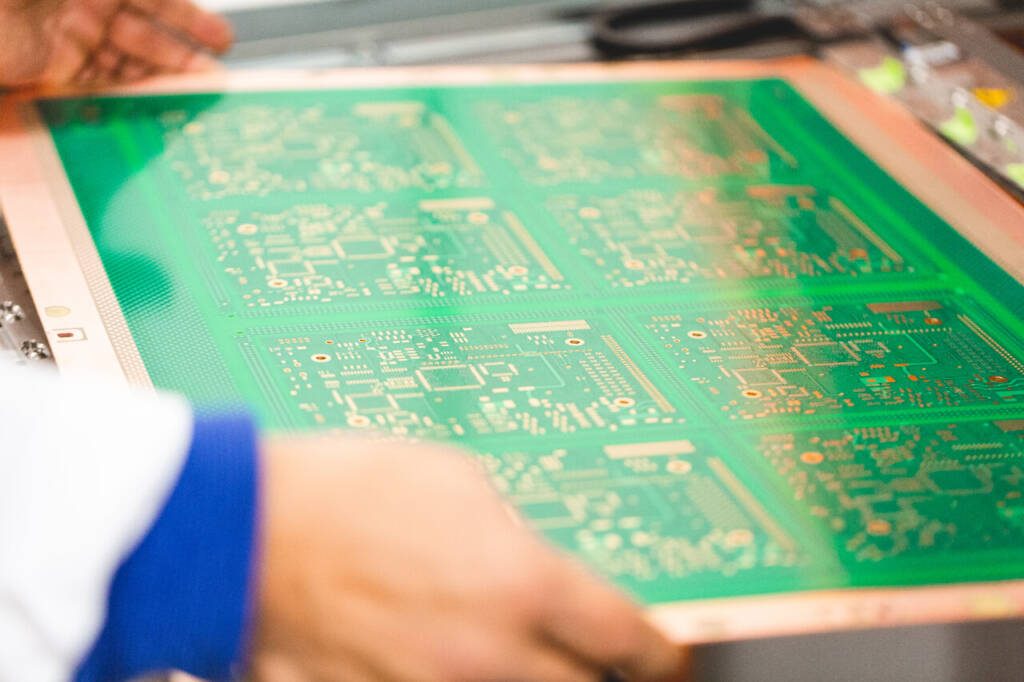
A radio frequency (RF) printed circuit board (PCB), which operates on very low to extremely high frequency waves, is typically used for projects involving communication signals. This includes everything from cell phones to military radars.
The layout of an RF PCB is typically a transmission line on top with a copper trace followed by dielectric materials. The second layer is either a group plane or power plane. All of this directly affects the impedance of the transmission line, the width of the copper trace, and the height of the dielectric material on the circuit board.
As is the case with all types of PCBs, there are some important considerations when it comes to selecting the right materials.
What to Look For When Selecting an RF Material Substrate
The substrate refers to the supporting material that’s used in a PCB. When selecting a substrate for RF PCBs, keep the following considerations in mind:
- Dielectric constant (Dk) — This refers to potential signal speeds and integrity depending on which substrate has been selected.
- Skin effect and loss tangent — Skin effect refers to noise that is picked up on the board due to the copper trace. Loss tangent is the measure of dielectric loss due to electromagnetic energy. High frequency circuit materials with a low stable relative dielectric constant (Er) and loss tangent allow for high speed signals to travel through the PCB with less impedance than standard FR-4 PCB materials. RF/microwave PCBs typically use materials with a lower loss tangent.
- Thermal properties — The coefficient of thermal expansion (CTE) and temperature of glass transition are two important factors when it comes to selecting RF PCB materials. High frequency PCBs, which are used extensively in high speed communications and RF microwave technology, have low levels of thermal expansion.
- Thickness — The thickness of a dielectric core or surface is dependent on the impedance value required.
Which Vendors Supply RF PCB Materials?
Material selection is an integral component of a successful RF printed circuit board.
Isola
Isola focuses on designing and manufacturing copper-clad laminates and dielectric prepregs used in multi-layer PCB fabrication. The company’s materials are used in many applications and markets, including networking, communications, radio frequency, and microwave.
Rogers
Rogers manufactures high-frequency laminates, bondplys, and prepregs. The company’s specialty materials, which have excellent dielectric constant control, are ideal for 5G wireless communication, automotive radar sensors, aerospace applications, and satellites.
Arlon
Arlon specializes in polyimide, low flow, and epoxy products; high TF multifunctional epoxy, controlled thermal expansion, low loss thermoset laminate and prepeg systems; and surface-mount technology. Typical applications for these materials include advanced commercial and military electronics.
Taconic
The company provides advanced composite materials for microwave, RF, and high-speed digital applications, including telecommunications.
Panasonic
The electronics materials division of Panasonic manufacturers Megtron high-performanced PCB and flex materials.
Nelco
Many of Nelco’s materials provide high thermal reliability and conductive anodic filament (CAF) resistance for lead-free assembly compatibility. The company’s materials are designed for high layer count PCBs and high-speed digital applications, including communications and networking equipment.
DuPont
DuPont manufactures Pyralux and high temperature flex materials; flex circuits are used in the oil, automotive, military, aerospace, and healthcare industries, in addition to many consumer products.
Working With PTFE and Other Materials
Some materials work better with RF PCBs than others, but it depends on the frequency. Teflon (PTFE), for example, works well with high frequency PCBs because it has a low loss tangent and a low Dk value.
Surface finish selection can also affect signal speed, which is why it’s important to select a PCB surface finish material that matches your needs.
Questions About RF PCB Materials?
Our engineers have extensive experience dealing with RF PCB materials and microwave technology, which helps ensure your orders are designed for manufacturability while being produced on time and on budget. We can provide custom RF and microwave PCB fabrication in as little as 24 hours — all you have to do is ask. Plus, all the design, fabrication, and assembly are done under one roof with no outsourcing.
If you have questions or would like more information about RF/microwave PCBs, please contact us. Ready to get started? Request a quote, and you’ll hear from us shortly.

